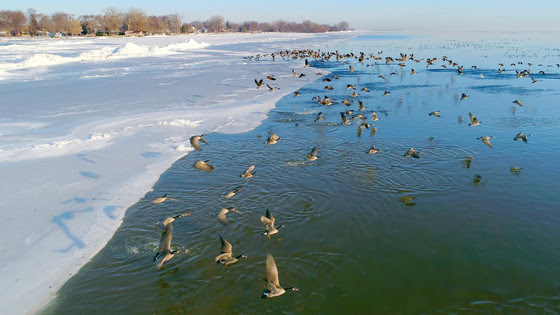Make it A Happy New Year: Be Safe on the Ice!
WI Dept Of Natural Resources Reminds Everyone to Practice Ice Safety this Winter
Reposted from WDNR
The Wisconsin Department of Natural Resources posted this reminder about ice safety a few weeks ago, but its still important to keep in mind as we head into 2023
FOR IMMEDIATE RELEASE: Dec. 2, 2022
Contact: Major April Dombrowski
DNR Recreational Safety & Outdoor Skills Section Chief
or 608-852-9456
Practice Ice Safety On All Waterbodies This Winter
Navigation Channels May Cause Unique, Changing Conditions

MADISON, Wis. – The Wisconsin Department of Natural Resources (DNR) urges the public to practice ice safety on all of Wisconsin’s waterbodies and remember that no ice is safe ice as they venture outdoors this winter.
Recent water rescues serve as chilly reminders that early-season ice on any Wisconsin waterbody is thin, weak and potentially life-threatening to anyone looking to get a jump on winter fun. None of the early-season breakthrough rescues were fatal incidents.
“Temperature swings, strong winds, currents, underground springs feeding lakes and rivers vary widely across Wisconsin,” said Major April Dombrowski, DNR Recreational Safety and Outdoor Skills Section Chief. “These factors are why no ice is ever considered safe, especially not this early in the season.”
Get Ice Status From Local Sources
The DNR does not monitor ice conditions. If your plans include access to or use of an ice-covered waterbody, contact your local fishing clubs, bait shops or outfitters for ice conditions.
“These places routinely check ice conditions and can give you the best and most current conditions,” said Dombrowski. “If you can plan your outing without any travel over ice, do it. And if you are going to be on some ice, let someone know your plans and follow them.”
Conditions Vary On Waterbodies
A waterbody can have its own characteristics. Check if the lake has inlets and outlets. Know whether its narrows are spring-fed or have currents like rivers, both of which can thin the ice. Some smaller lakes can have aerators that are run throughout the winter, either covering a large area towards the center of the lake or may have smaller aerators placed by private property landowners adjacent to their shore and piers.
It is equally as important to stay alert for pressure ridges or ice heaves. These can be dangerous due to thin ice and resulting open water. They are often created, move or grow with changes in temperatures and high winds. Pressure ridges and ice heaves can happen on Wisconsin’s largest lake, Lake Winnebago, a popular home to sturgeon spearers, and the Bay of Green Bay.
Winds, Navigation Channel Are Recipe For Flowing Icebergs On Bay Of Green Bay
Anyone using the Bay of Green Bay for any reason this winter should be especially cautious.
The Bay of Green Bay is about 120 miles long and 10 to 20 miles wide. According to DNR Marine Warden Team Supervisor Lt. Ryan Propson, navigation channels serving as ship highways cause the huge water body to only completely freeze over occasionally. Users must pay extra attention to changing weather conditions, including high winds, and be knowledgeable of the maintenance of the navigation channel to avoid becoming stranded on free-floating icebergs.
During any time of the winter, but especially when the shipping channel is being maintained, any high wind can create waves under the ice. The force of the waves causes the cracks to form, leading to large sections of ice breaking off and floating away. Similar situations can occur due to cracking with large or sudden temperature changes.
Ice Safety Basics
Here are a few basic ice safety tips to remember:
- Carry a cell phone, and let people know where you are going and when you’ll return home.
- Wear proper clothing and equipment, including a life jacket or a float coat, to help you stay afloat and to help maintain body heat.
- Wear ice creepers attached to boots to prevent slipping on clear ice.
- Carry a spud bar to check the ice while walking to new areas.
- Carry a few spikes and a length of light rope in an easily accessible pocket to help pull yourself – or others – out of the ice.
- If you fall in, remain as calm as possible. While attempting to get out of the water, call for help. Anyone who attempts to rescue you should use a rope or something similar to avoid falling through themselves.
- Do not travel in unfamiliar areas or at night.
Have a plan in place noting where you will be and when you plan to return. Along with leaving a written note of your plans, keeping a charged cell phone is also recommended.
Check out the DNR’s Ice Safety webpage for more information on staying safe on the ice, including tips for creating ice claws and what to do if you fall through ice.

